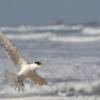-
Posts
9,502 -
Joined
-
Last visited
Content Type
Profiles
Forums
Gallery
Events
Everything posted by Jim Lad
-
Hello, and a warm welcome to MSW from 'Down Under'. John
-
Very nice progress, Dan. I find those small chains criss-crossing the forecastle puzzling. They certainly look too small for anchor cables on a ship of that size, but what is their exact use? Do you know? John
- 238 replies
-
- leviathan
- troop ship
-
(and 2 more)
Tagged with:
-
Hello Cleat, and a warm welcome to MSW from 'Down Under'. John
-
Hello, and a warm welcome to the forum from 'Down Under'. John
- 6 replies
-
- schooner atlantic (gulp!)
- cape upright
-
(and 2 more)
Tagged with:
-

Trawler deck planking
Jim Lad replied to Kevin's topic in Building, Framing, Planking and plating a ships hull and deck
That looks good, Kevin. I always do the margins first on the basis that each plank can be fitted as you go. The down side of doing that is that if you slip and ruin the margin, then you've got a real problem on your hands - thankfully it hasn't happened yet. John -
She really looks the ants pants on that stand Mark. Unfortunately I won't be able to come on Wednesday week, but thanks for the open invitation. John
-

Trawler deck planking
Jim Lad replied to Kevin's topic in Building, Framing, Planking and plating a ships hull and deck
Yep. Your second attempt piece is exactly the way the planks fit into the margin. John -

Trawler deck planking
Jim Lad replied to Kevin's topic in Building, Framing, Planking and plating a ships hull and deck
Kevin, Below is a photo of my partially completed model of the 'Francis Pritt'. You can see how the deck planking is "nibbled" into the margin plank. the square ends of the "nibbled" planks are usually 1/3 the plank width. John -
Hello Joel, and a warm welcome to the forum from down in Australia. John
-
Hello Kudin, and another warm welcome to the forum from 'Down Under'. John
-
Hello Bob, and a warm welcome to MSW from 'Down Under'. John
-
Hello Geoff, and a warm welcome to the forum from 'Down Under'. John
-
Hello Clipper Fan, and another warm welcome from 'Down Under'. John
-
Hello Jan, and another warm welcome to the forum from 'Down Under'. John
-
Richard is in on Thursday. Unfortunately George, our Friday model maker, is currently not very well. John
-
Looks good, Mark. Pierre is great for scale, but the dime means nothing outside of your borders! John
About us
Modelshipworld - Advancing Ship Modeling through Research
SSL Secured
Your security is important for us so this Website is SSL-Secured
NRG Mailing Address
Nautical Research Guild
237 South Lincoln Street
Westmont IL, 60559-1917
Model Ship World ® and the MSW logo are Registered Trademarks, and belong to the Nautical Research Guild (United States Patent and Trademark Office: No. 6,929,264 & No. 6,929,274, registered Dec. 20, 2022)
Helpful Links
About the NRG
If you enjoy building ship models that are historically accurate as well as beautiful, then The Nautical Research Guild (NRG) is just right for you.
The Guild is a non-profit educational organization whose mission is to “Advance Ship Modeling Through Research”. We provide support to our members in their efforts to raise the quality of their model ships.
The Nautical Research Guild has published our world-renowned quarterly magazine, The Nautical Research Journal, since 1955. The pages of the Journal are full of articles by accomplished ship modelers who show you how they create those exquisite details on their models, and by maritime historians who show you the correct details to build. The Journal is available in both print and digital editions. Go to the NRG web site (www.thenrg.org) to download a complimentary digital copy of the Journal. The NRG also publishes plan sets, books and compilations of back issues of the Journal and the former Ships in Scale and Model Ship Builder magazines.


